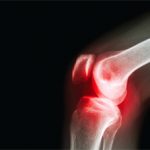
Model Created for Predicting the Development of RA from UA
A point-system model that predicts progression of undifferentiated arthritis (UA) to rheumatoid arthritis (RA) using easily measured clinical variables was published in Arthritis & Rheumatism (2007;56(2):433-440).
When patients initially visit a physician because of joint pain, their arthritis is often in the early stages of disease and cannot yet be classified as RA. Of all patients with UA, in fact, only one-third progress to RA.
Early methotrexate treatment can slow progression of RA and prevent joint damage in this patient group. But another 40% to 50% of UA patients eventually go into spontaneous remission, and thus don’t need to be treated with methotrexate, which has side effects including liver toxicity.
“This is a dilemma if you’re trying to achieve the best individual treatment decisions,” says lead author Annette H. M. van der Helm-van Mil, MD, PhD, of Leiden University Medical Center in the Netherlands. “You don’t want to over-treat, but the patients who go on to RA will benefit from early treatment.”
The new model is based on data from 570 patients diagnosed with UA between 1993 and 2005. At the initial examination, patients were asked about pain symptoms and severity of any morning stiffness. Blood samples and hand and foot x-rays were taken. After one year, patients were tested again to see if they had progressed to RA.
The researchers performed a multivariate analysis to see how well each of nine clinical variables—gender, age, symptom localization, morning stiffness, tender joint count, swollen joint count, C-reactive protein level, rheumatoid factor positivity, and presence of anti–cyclic citrullinated peptide (anti-CCP) antibodies—predicted RA progression.
The researchers then created a scale ranging from 0 to 14, with different point values assigned for each variable according to how significant it was to predicting RA progression. The most heavily weighted variables are gender, presence of anti-CCP antibodies, and morning stiffness severity.
The scale had strong predictive ability: 91% of patients who scored a 6 or less on the scale did not progress to RA; 84% of patients that scored an 8 or greater did progress to RA. Clinicians could thus be relatively confident in prescribing medication to a patient scoring above an 8.
But the biggest advantage of such a scale, Dr. van der Helm-van Mil says, is that it “will make it easier for patients to be part of the discussion when the rheumatologist is making a treatment decision.” The researchers are now validating their model in various patient groups throughout Europe.

Exercise Habits Do Not Affect Development of Knee OA in Older Adults
Could exercise, due to an increased loading on the cartilage, increase the odds of developing knee osteoarthritis (OA)? Happily, the answer appears to be no. Moderate physical exercise has no effect—positive or negative—on the development of knee OA, according to a study published in Arthritis Care & Research (2007;57:6-12).
Previous research had not answered the question definitively. Lead author David Felson, MD, MPH, professor of medicine at Boston, says older studies used small pools of subjects and didn’t do long-term follow-up measurements. “It takes a long time to develop osteoarthritis, so following people for just a couple of years, especially with a smaller sample, just isn’t enough,” he explains. This new study lasted more than nine years, using more than 1,200 subjects from the Framingham Heart Study database.
Starting in 1993, Felson’s team took baseline measurements of 1,705 patients, mostly middle-aged subjects from Framingham’s offspring cohort who did not have any signs of OA. Each subject had weight-bearing, fully extended x-rays taken of both knees. They also answered a series of detailed questions about their history of knee pain symptoms and regular exercise habits.
Between 2002 and 2005, Felson’s team sought out the initial subject pool to repeat the measurements. About 75% (1,279 subjects) went through the second examination, which followed the same X-ray protocol as the baseline examination.
Blinded to patient details, two independent readers compared each subject’s baseline and follow-up X-rays. They gave each a Kellgren and Lawrence (K/L) grade—a quantitative determination of the incidence of OA. If the two readers disagreed on K/L grades, a third independent reader was asked to adjudicate.
Subjects were divided into three groups based on exercise habits reported during the baseline examination: no walking for exercise, walking less than six miles per week, and walking more than six miles per week. Slightly more than 9% of subjects developed incident OA, with no significant difference between exercise groups.
Overweight subjects were significantly more likely to get OA (13.7% versus 5.9%, respectively); however, overweight subjects who exercised were no different than overweight subjects who did not exercise. For both normal overweight subjects, exercise did not contribute to an increased risk of OA.
Though this study showed that moderate exercise doesn’t increase the risk of OA, Dr. Felson says older patients should probably avoid more intense exercise. “We studied mostly recreational walking… . We’re not saying anything about jogging or running—I’m not sure that’s going to be safe.”
If moderate exercise doesn’t prevent OA, what does? “Keeping your weight down is a good way to keep you from getting it, that much we know,” Dr. Felson says. “And avoid situations where you’re likely to injure your knees.”

